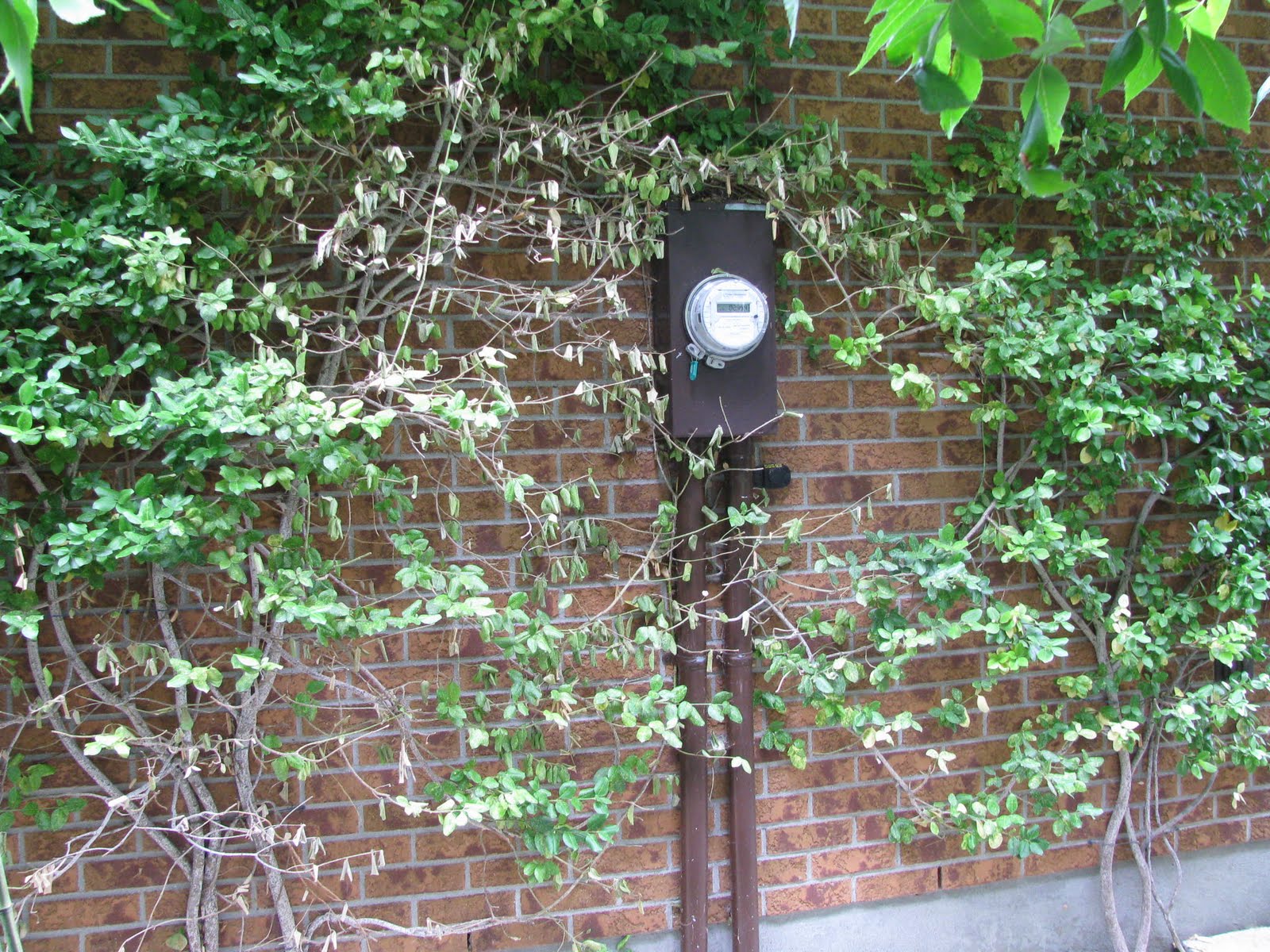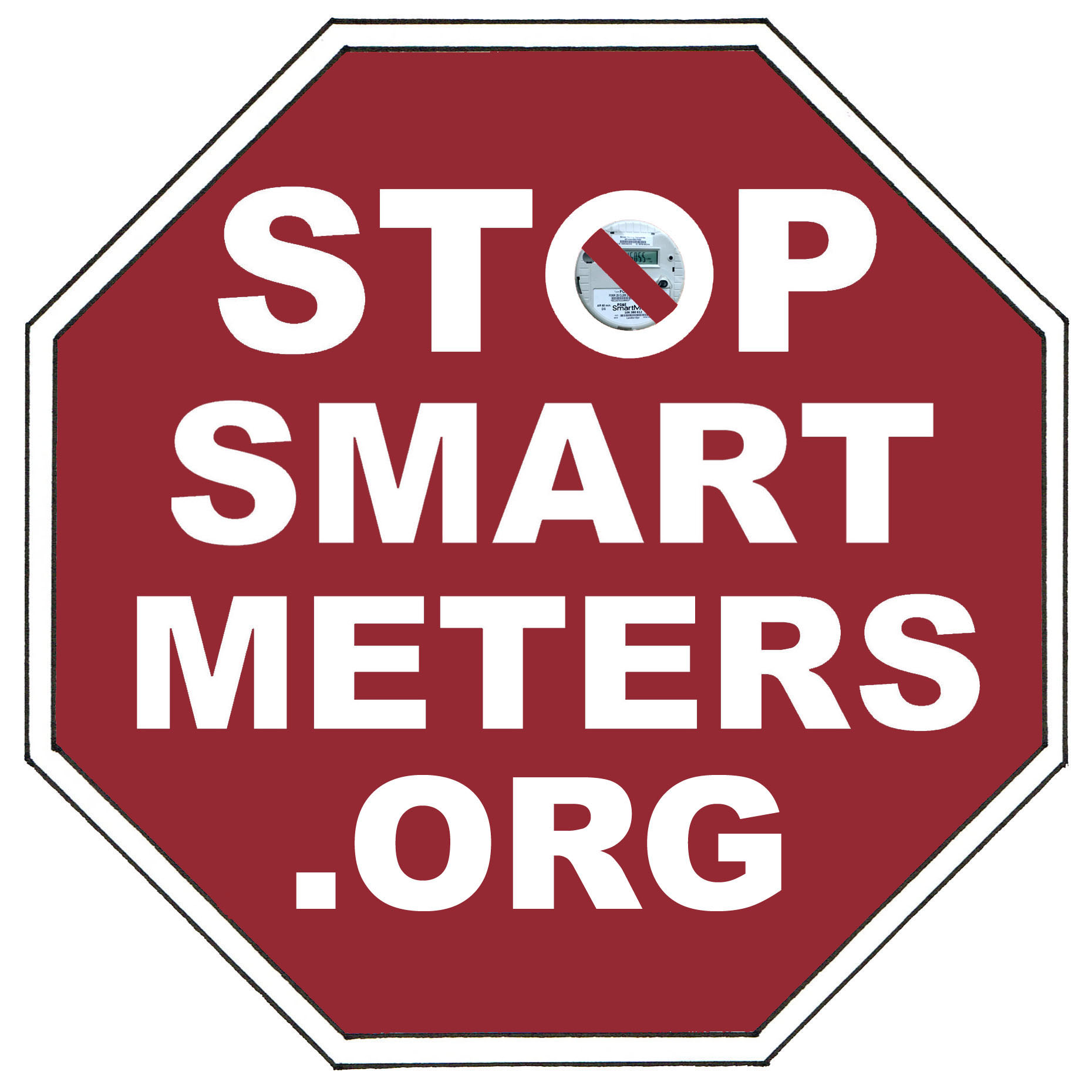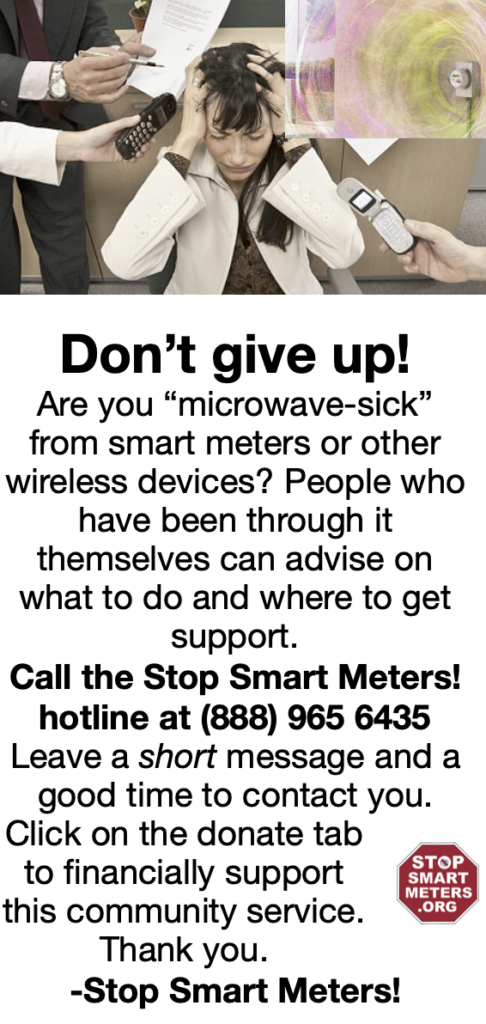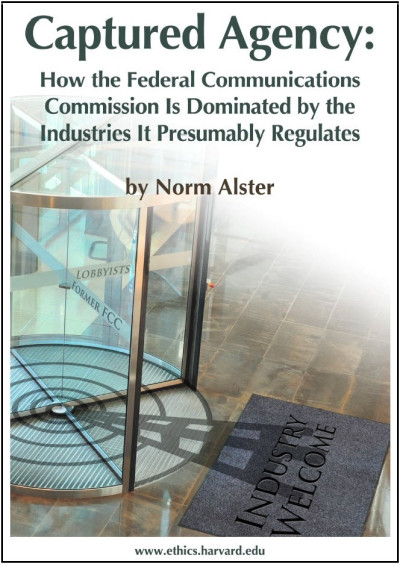The dream is gone…
By Deborah Kopald, Guest Columnist
Read parts I and II of Deborah Kopald’s Science Denial series here on StopSmartMeters.Org
As for smart meters and other wireless devices, the U.S. has not pre-market safety tested any of them and has not conducted any studies on Wi-Fi, cell towers, or the “smart” grid, while 80 percent of international studies show negative health effects to those who live up to a quarter-mile from cell towers.
Before cell towers were rolled out, the scientific literature showed sleep, cardiovascular, neurological and metabolic problems for people who lived near other microwave-emitting towers like tv, broadcast and air traffic control towers, radar installations and even radiofrequency-emitting radio towers. In part because the cell network relies on what are effectively two-way radio handheld devices to communicate with the towers, more microwave transmitters at closer intervals are required to run wireless networks than these older radiation-emitting transmission systems needed. Even more towers are required now that the government has permitted telecom companies to enable people to transmit not only phone calls wirelessly, but endless amounts of data and video, which should be transmitted by wire or cable instead.
Back in 1993, the California Public Utilities Commission had recommended siting towers away from schools and hospitals (by extension, that guidance should have included residences, since children and vulnerable populations also reside there). Independent scientists suggested that towers should be set at least a quarter-mile away– the approximate distance for the power density to level off; by 2009, the EU stipulated that towers should be kept away from schools, hospitals and old-age homes.
The first question people should have asked themselves when Wi-Fi was rolled out is how does this radiation compare to a tower? A layperson with a rudimentary grasp of physics but an inquisitive mind would have understood that proximity to the transmitter is the larger factor in radiation exposure than total power output. Per the math (verifiable by measurement), ubiquitously Wi-Fi-ed institutions expose many of their inhabitants to more radiation than they would get picnicking close to a cell tower. Even with the relatively lower-powered Wi-Fi in homes, people’s cumulative exposure from regular use of Wi-Fi exceeds the exposure most of them are getting from most cell towers.
So why would anyone have permitted the ubiquitous rollout of a technology (Wi-Fi) that would expose many people to more radiation than they would get from even a cell tower that was poorly sited (not at a distance per early precautionary warnings)? While it is understandable that the public believes that anything that is legally sold has been properly vetted for safety, blame should squarely be laid at the feet of the managers of institutions–schools and private and public sector offices– for deferring to their IT departments and not inquiring into the sense of exposing building occupants to microwave radiation all day.
In any event, many didn’t notice the transmitters going on their rooftops and on the walls and ceilings of their offices, schools and public buildings or grasp the implications of bringing transmitters in closer to human environments. While cell phones obviously present the most intense exposures, people are not exposed to them continually; indeed a 2009 Swiss study showed that on average, people moving in and out of urban areas got more cumulative exposure from transmitters than from their cell phones. Nevertheless, cell phone use, as previously discussed, is linked with a host of problems from cancers, to concentration problems and headaches. It isn’t hard to connect the dots and realize that extra cumulative radiation — indeed extra radiation that exceeds what people are getting from their daily use of a cell phone — presents a public health problem.

A shrub surrounding a smart meter in Ontario, Canada shows biological effects close to the meter
Smart meters, wireless meters that are like mini-cell towers placed on the side of people’s homes (in lieu of meter readers), are perhaps the most noticeable devices to be rolled out exposing the public to an involuntary continual stream of microwave radiofrequency radiation. The perceived involuntary nature of the exposure, sanctioned by the government (and indeed a number of “environmental” groups like EDF (one of their trustees is married to a venture capitalist who is profiting handsomely from forced transmitter rollout– as is Al Gore, an “Inconvenient Truth” if ever there were one) and the Sierra Club, which should know better), adds to the grief that people get from having a smart meter forced onto the side of their homes.
The relative health impact of any device is going to depend upon how much and how often you use it/ are exposed to it and how close you are to it. People are focused on the smart meter because it creates a more obviously involuntary exposure, and depending on its relative location to the areas you frequent (bedroom, office), it can make you very sick, very quickly. However, many who are concerned about smart meters are using Wi-Fi, and in many cases, their cumulative exposure from regular use of Wi-Fi will exceed that of the radiation from the smart meter. In the most extreme situations (depending on its location), the smart meter could expose the house dweller to 100x as much radiation as their Wi-Fi router (although, conversely their Wi-Fi router can expose them to more intense radiation than their smart meter depending upon their relative locations). In addition, the smart meter emits high-intensity spikes that are particularly disruptive to human physiology. Together these exposures are cumulative. Neither Wi-Fi nor a smart meter should be in or on your home if you want to protect yourself from excessive radiation exposure and/or if you buy the aforementioned concept that you shouldn’t be dwelling near a cell tower. Either Wi-Fi or smart meter exposure will expose people on average to more cumulative radiation than their cell phone use will.
Deborah Kopald’s warning notices for buildings inform the public whether a Class 2B carcinogen is in use on the premises
Again, if the smart meter is on the other side of your headboard, the smart meter could expose you to even more intense radiation than you would get from speaking on a cell phone; so the exposure could be worse than if you had a cell phone on by your head all night. Certainly, if France and India are telling their citizens not to use a cell phone more than 6 minutes per day, and only a half hour a day is linked with significant brain tumor increases, nobody should be forced to sleep with a smart meter on the other side of the wall. Per my last article, our government has no standards for continual exposure — (the German government encourages people to limit their cumulative exposure and not install wireless, microwave-emitting technologies in their homes.) The answer to the question, “how far away is safe enough?” is as follows: there is no safe level of exposure, and peoples’ individual thresholds for permanent harm will vary.
Certainly, it is better if the smart meter is farther away from you, but metal inside the home can create hotspots that expose people to even more radiation than the lax FCC limits, underscoring the point that there are no safe limits. In terms of the radiofrequency interference problem, people with pacemakers or other medical implants are told by utilities (only after being directly asked) to avoid the wall in the house where the smart meter is located. What is indisputable is that smart meters (and by extension the governments that are allowing them to be mandated) create levels of radiation in some people’s houses that are higher than ones already linked to statistically significant levels of disease from cell phones or cell towers.
The Precautionary Principle has been invoked by governments that have called for restricted use of wireless devices and infrastructure and is the rationale for moratoriums on smart meters. (Opt-outs don’t do the Precautionary Principle justice as people still get passive radiation from their neighbors’ smart meters, and apartment building dwellers can be exposed to banks of meters which multiply the total amount of radiation). In any event, we are way beyond precaution at this juncture. This brings me back to Felicity Barringer’s New York Times columns. First, Barringer pointed out that opposition was growing to smart meters. Two days later, she dismissed opponents of smart meters and cell phones as anti-science hypochondriacs.
I emailed Elisa Boxer-Cook, a smart meter opponent in Maine referenced in the original article and Emmy-award winning journalist herself (she was formerly the main anchor of the ABC affiliate in Portland). Her reaction: “I am surprised and disappointed that The New York Times allowed something so clearly biased to be published, without vetting it for fairness and objectivity.” Felicity [Barringer] interviewed me for this story … and it was extremely clear to me … that she had her mind made up … Her arguments here seem to be coming from the industry playbook: paint the opposition as anti-technology.” Maine has since offered the option to opt out of smart meters.
Barringer’s analysis of the smart meter opponents’ “cultural resistance” to “the hierarchist status quo” is utterly beside the point. Besides the hotspots, the federal Interagency Working Group on Radiofrequency Radiation states that the safety limits on pulsed RFR (emitted by smart meters, Wi-Fi, phones and other wireless devices) are not protective of human health, suggesting that the cumulative effect of all the other proliferating sources of RFR is also a problem. The National Academy of Sciences wrote a report in 2008 suggesting that dangerous hotspots could be created by all this radiation around metal – this includes not only furniture in our homes, but metal on our bodies including brassiere underwires, piercings, braces, jewelry, glasses, hair fasteners, belt buckles, shoes and medical implant devices. Norbert Hankin, a then-EPA official, stated over a decade ago that no long-term standards for exposure to radiofrequency radiation even exist. In the absence of standards for long-term cumulative exposure, why is the government subsidizing the rollout of a wireless smart grid? Indeed, why did the FCC announce that landlines would be phased out in certain areas, especially when Congress already held two sets of hearings questioning the safety of cell phones?
Besides the aforementioned technologies and cordless phones, Bluetooth and baby monitors (which are also adding to peoples’ lifetime cumulative exposure to microwave radiation), the FCC has been promoting Distributed Antenna Systems (DAS) to replace wired landlines and wired internet via DSL or cable modem. DAS are the next generation cell towers, and even though they are lower powered than most towers, their proximity to people’s homes means that they are exposing people to more radiation than cell towers. Government promotion of DAS is preventing the marketplace from being incentivized to use and develop safe, non 2b-carcinogen-emitting technologies that could be transmitting utility information by wire.
Besides the DAS fiasco, our other “smart” devices are turning into high-powered hotspots, further collapsing the distinction between a phone and a transmitter. Someone sitting next to you in an auditorium could be exposing you to levels higher than if the auditorium had rented their seat to a wireless company and installed a cell tower there. Children’s “educational tablets” can expose them to comparable levels. Hidden transmitters are being put in city parks and bus stops. (While new sources of radiofrequency radiation are rolled out adding to your cumulative exposure, the mayor of NYC has promoted 2b-carcinogen-emitting transmitters in parks while vigorously fighting public exposure to large portions of sugary soft drinks and smoking outdoors at the beach.) The smart meter is the transmitting device that evokes the most public outrage — and understandably so, since the government is effectively forcing them on private property, and the fact that they are exposing some people continually to more radiation than many people are getting from these other sources individually, if not cumulatively. If Barringer can’t get the smart meter story right, don’t hold your breath for The New York Times (or the rest of the mainstream media for that matter) to untangle the rest of the story of the Rise of the (microwave radiation-emitting) Machines.
Many scientists believe that exposure to radiation from wireless devices and transmitters is trumping smoking and second-hand smoking as a current public health crisis; some have publicly stated that this problem is more serious to human health than global warming. An analysis of the relative health impacts of these problems over time over the whole population is complicated and goes beyond the scope of this piece. It is viscerally apparent to those who have either gotten head cancers from their cell phones, or have developed electro-hypersensitivity — a number that an advisor to the UK Health Protection Agency estimates to be about 10% of the population to date –from exposure to Wi-Fi, smart phones, smart meters, another source or from some combination thereof — that wireless devices and transmitters are a clear and present danger.
Ironically, these technologies are being falsely touted as solving the global warming problem. ((Like smart meters, which do not reduce greenhouse gas (GHG) useage, smartphones are called “green” when in fact it was reported (by The New York Times!) that the data server farms used to house the data and make it available for on-demand wireless transmission creates more GHG than the pulp and paper industry it is supposed to be supplanting.))
For those still in disbelief that this oft-quoted newspaper could have gotten it so wrong, let me point out what happened the last time this country publicly recognized a health crisis caused by electromagnetic radiation. From the 1970’s until 1987, Suffolk County, NY passed historic legislation protecting its county workers from video display terminals (VDTs); these data entry computer terminals were being used by clerks, airline reservationists and newspaper workers and were causing miscarriages, stillbirths and birth defects to pregnant workers. Other workers got eyestrain from VDT radiation. After Suffolk’s Law and a report by Kaiser Permanente, the VDTs were yanked off the market and redesigned to be relatively safe…but not before The New York Times wrote an editorial pooh-poohing the science, while simultaneously fending off a lawsuit by its own workers, who complained of ill-health from VDTs.
Unfortunately while VDTs were wired devices and could be redesigned to cancel out currents and magnetic fields, the current spate of problems cannot be fixed this way; wireless radiation radiates out into space and the existing set of devices interact with an array of fixed transmitters. The only way to protect the public’s health is to reduce exposure. The government needs to be told (repeatedly, apparently) to stop allowing its regulated utilities to mandate microwave radiation-emitting transmitters on people’s homes. Neither the government nor the Felicity Barringers and The New York Times‘ of the world will act in the public interest unless enough of us stand up to terminate the belief that our health is less important than the machines that are driving the corporate bottom line.
Deborah Kopald (BA, Harvard; MBA, MIT Sloan School of Management) is an environmental health and public policy advocate who has authored numerous articles and a forthcoming book about electromagnetic pollution. She developed and oversaw the promotion of successful legislative initiatives at the local, and county and state levels in New York State, has addressed 35 offices of Congress, has appeared as an expert guest on television and radio programs, and has been an invited speaker at SUNY campuses, Rotary Clubs, parents groups, two county legislatures, the NY State Senate, the Association of Towns and various municipal governments. She received an award from Orange Environment in October, 2011 for her public education efforts and advocacy of transmitter-free zones.
Copyright 2011, Deborah Kopald, all rights reserved









“…warning notices for buildings inform the public whether a Class 2B carcinogen is in use…”
Eye-catching signs; well done. But the mis-use of the IARC’s classification in the article and the caption needs work.
Wireless radiation is *not a carcinogen* of Class 2B; and a careful reading of the IARC’s work will clarify its definition. This SSM! movement has latched onto classification of various chemical and environmental agents as “possibly carcinogenic” to mean that the agent IS carcinogenic, and THAT is incorrect.
Anyone with an interest in understanding the “carcinogenicity” of low-power RF radiation would be well-advised to read the Preamble to the IARC’s evaluation. Here is a useful link – http://monographs.iarc.fr/ENG/Preamble/currentbscientificintro0706.php
Richard- all non-ionizing wireless radiation is now on the World Health Organization’s carcinogen schedule as a class 2B. If you look at the history of carcinogens and how they are categorized, they move up the scale (hardly ever down the scale) with more certainty as more data becomes available. The ‘possible’ label that you insist be attached to every mention of the word ‘carcinogen’ is implicit in the 2B label. In fact, many scientists (not connected to industry) were convinced that there was enough evidence to label wireless a Class 2A (probable) carcinogen. Anyway, clearly there is a risk here- even the conservative WHO thinks so. Why should we take the risk if it’s not even necessary. That’s the question you fail to address with all your criticisms.
@onthelevel – Actually, I have sort of addressed that question…
1. I would support a free opt-out, and here’s why: https://stopsmartmeters.org/why-stop-smart-meters/#comment-259553
2. I’m not sure what level of radiation is okay: https://stopsmartmeters.org/why-stop-smart-meters/#comment-256785
So I should temper my earlier comment, because wireless telecomm radiation may, in fact, be carcinogenic — although (I believe) the levels that we encounter on a routine basis are fleeting and probably harmless. What levels pose a significant risk? I’m not sure.
A recent publication by Devra Davis, et al. sheds some light on the uncertainty, summarizing some of the research as follows – “A variety of human, rodent and cell culture experimental studies though inconclusive, do collectively suggest that mammalian brain tissue may be sensitive to cellphone levels of EMF”.
Ref – http://apps.fcc.gov/ecfs/document/view;jsessionid=KGByRh2Qc2nwj3X4p0kcqqb27dJPTTJGTQJS1hh4C1CdTWkJ4slM!956499833!-1705390101?id=7022119045
“Inconclusive” results that “suggest” that cells “may be sensitive” are not enough to send me running. And so I keep an eye on the research.
I just think it’s important to respect the definitions that have been established by the WHO/IARC, and not twist them into a form that conveniently supports the anti-wireless agenda.
Peace.
But you still seem to be in favor of the smart grid as an energy policy without any evidence that it does what it promises, while also inflicting what is clearly a risk (unless you think you are wiser than the International Agency for Research on Cancer and the World Health Organization). That seems an awful leap you are taking and why others as well as myself suspect you as being a representative of industry. It just doesn’t add up Richard.
Josh
No ties to the industry. Just a customer. You said yourself (a year or more ago) that you could not find any indication of my affiliation through my IP address or use of a proxy server, etc… and you won’t, because I have no affiliation with industry.
“…(unless you think you are wiser than the International Agency for Research on Cancer and the World Health Organization). ”
Where do you get that? Let me be clear about this: I totally agree with their evaluation; it seems fair and reasonable to classify RF radiation as a Class 2B agent, according to its definition in the IARC Preamble.
The question continues to revolve around exposure limits (duration and intensity) and robust scientific investigations that indicate biological *harm* due to exposure. For example: Is the documented change in glucose metabolism harmful, or just something that happens…?
RF radiation may be carcinogenic, but at what levels of exposure; at what intensity; for how long? My arguments are perfectly consistent given the uncertainty that exists within the research arena. I don’t know what the answer is, but (as I ref’d in my previous post #2) I think the latest Bioinitiative Report has proposed some unreasonably low limits for everyday exposure. Am I wrong? Maybe (but I don’t think so), and I’m willing to accept that uncertainty (risk) for now.
Uncertainty is valuable; it guides us in our investigation of the world. And if the IARC ranks the carcinogenicity of RF radiation with a high level of uncertainty (i.e., Class 2B), then I feel that I can live with that.
Your opinion (and reaction) may vary.
FYI – the latest IARC Monograph on this issue…
http://monographs.iarc.fr/ENG/Monographs/vol102/index.php
Nevertheless, any exposure equals some risk, while no exposure equals no risk. Again, why take the risk? Especially when billions of people may pay a dear price if the gamble is lost.
You are right Josh, his story doesn’t add up. Here is one that does.
Paracelcus said it best…”Poison is in everything and no thing is without poison. The dosage makes it either a poison or a remedy.”
Sunlight has many benefits. Rf radiation is being used to treat wounds and heal bones. Both use the same type of electromagnetic wave. The only difference is that the sun doesn’t radiate us 24/7 like the smart meter does, not to mention the 3am hour when it’s communication is the busiest.
Just imagine if it were daylight for 90 seconds at 3am everyday, it is after all the same as rf. Maybe some would awake and others not? Right now I’m looking for people that aren’t and I’m not having much luck. Circadian rhythm? Not when it only happens in smart meter territory and for the last couple of years. Go camping in the forest, without any cell towers, and cover your phone with foil before you get to your destination. It will cure you of the 3am wakeup until you return home.
Why don’t people understand this? Not everyone carries around an analyzer to detect this manmade nuisance. Ignorance is bliss especially when you can’t see, hear, or smell it.
If you’re not certain what levels of RF radiation are okay and science is “not conclusive” then what right does industry have to proliferate devices that emit the radiation until we know?
For people getting sicker and sicker from the impacts, whether or not others “believe” in it, this is truly an atrocity of huge proportions. At least, if the infrastructure planners lefts some places wired only we would have places to go and survive.
This is an ethics question after all.
First, I don’t think my opinion has anything to do with the right of industry to install wireless meters. Then, about the inconclusive results… Science is a tricky endeavor. Let’s first eliminate bias from the discussion… Even then, there is no guarantee that the results will be conclusive. If not conclusive, then what? More studies; new parameters; rats; mice; sperm?… What will satisfy those claiming to be sensitive to low-power telecomm radiation? Studies involving those with EHS have shown no difference in response to exposure versus non-exposure… But critics (of course) claim bias… So, where do we go from here?
If you want a certain outcome (e.g., wireless radiation causes this list of symptoms), then speak to an engineer, because that’s what engineers do. All a scientist can do is collect data and evaluate the significance of that data in light of some working hypothesis.
Some things just do not correlate—like IQ and weight—while others show a strong relationship—like height and weight. All a scientist can do is look for relationships, and as much as I would appreciate seeing a consistent relationship of wireless radiation and biological harm, it just hasn’t appeared. When the multitude of studies are “not conclusive”, is it wrong to say that the technology is safe, or should we continue to seek a correlation that in all probability does not exist?
So, I guess my answer to your question of “what right does industry have”, I would have to say that they have every right to install a wireless meter on my house. Should people have the right to opt out free of charge?… Sure, why not… You can read my reasoning on that subject up above (see #1).
Take care.
What I have noticed is that your position has been softening with regard to your assumption that sm’s are safe. It’s okay to change your mind over time! We welcome people of all opinions to share in the debate here and I for one am glad you continue to post here and be involved. 🙂
J
Well, thanks–I appreciate that comment, J.
To be clear, my position hasn’t really softened on the safety of SmartMeters–In fact, it’s always been rather squishy 🙂 which is why I continue to monitor the issue of EMFs and human health.
While I am open to the possibility of some people being sensitive to EMFs (based mainly on there being outliers in any normally-distributed population), I still question the reality of the condition; and I maintain that if it’s real, then it should be testable.
I also maintain that the Precautionary Limits of the new Bioinitiative Report (2012) seem to be unreasonably low.
I guess what has softened is my reaction to people who want to opt out, and my earlier post pretty much covers that.
Anyhow… Thanks 🙂
Ah yes, the “inconclusive” term again. This word is a must for anyone in the media reporting on the subject.
If the study was wireless industry funded then there are no affects and the scientists are competent. If not the one paying the advertising bills, your studies showing affects, are incompetent.
There are over 6,000 independent and government studies, before 1983, showing there is a problem. I guess they were all incompetent, since no money can be made from stopping the wireless giant.
Dr. George Carlo was given $28.5 million, from the wireless industry, back in the early 90’s and he found that there was intracellular communication disruption. He was asked not to publish his findings and did anyway. Subsequently, he was physically attacked and his house was burnt down. I’m sure scientists all over took note on this one.
So now we have “weight of evidence” meaning lots of industry funded studies showing no affect, versus independents showing there is.
Would you take a drug that wasn’t necessary with the only studies showing inconclusive results from the drug company funded studies? When independent studies were showing major problems? No, of course not! Unless you worked for the drug company. You may even follow closely the conversations of those opposing your livelihood. The goal may be a disruptive one and definitely to create doubt.
Wireless broadband now pulses from cell towers 24/7 to cover whole counties. It is WiFi on steroids and can be read via an RF meter on the streets, in parks, in yards, and the map shows the signal even going out into Lake Michigan a ways (in case you buy the service and are on your yaght??)
I happened to have a baseline measurement right before it went in. The baseline was not great either according to safe standards, but take a look at the jump in AMBIENT RF inside. They installed wireless broadband so rural people could have access. Equal opportunity to be irradiated. argh.
http://youtu.be/KG9gvuEAYBk
That is quite a video you have there. You were fortunate to record the readings before they started trying to eliminate the surrounding population. I would definitely move. In the meantime, placing water between you and the propogating source will block the signal. The perimeter walls would be the focus.
Richard, the “scientist”, prefers the type of antenna you are using in the video. Have you tried using your directional antenna to show where it’s coming from?
Water? How?
We did try a screen enclosure around a bed but too hard to seal. Was on top floor. Not really good, also above fan outlet below, etc.
WATER? How about water jugs stacked? Didn’t you have a picture of this somewhere???
Thanks.
As for ambient levels before, I had been doing this due to smart meters that same month. ALso, and I warn anyone, we had our wiring “tightened” to reduce electrical pollution but it seems to have made the bad stuff circulate better, too… thanks
Microwaves can’t travel through water at levels they are using. They are directional and once they meet water they stop dead in their tracks. I just stack cases of water in the direction of propagation. Unlike foil it doesn’t reflect and doesn’t need to be grounded. I find that using the cheap 32 bottle cases, without a cardboard support, to be the best. Don’t stack them to close to you because they will hold a charge like a battery would. Perimeter walls are the best location. You will see that your levels will be return to normal.
one more detail is I measured the broadband signal on our wiring throughout the house. I had measured just previously to broadband expansion by chance, getting some work done. Since broadband expansion you can hear the machine-like pulse on our wiring 24/7. Wonder if the water would still help. It’s worth a try….but this is a complicated issue.
Using the other RF meter antenna allows the sound to be heard.
thanks
P.S. Sometimes wireless broadband is called WiMax. No matter what you call it it is blanketing whole areas with pulsed microwaves.
In case anyone reading this thinks that everyone is out there protecting you…Here is a video of CNN’s founder Ted Turner.
http://m.youtube.com/#/watch?v=DMgamzziQMM&desktop_uri=%2Fwatch%3Fv%3DDMgamzziQMM
Wireless giant Bill Gates believes in depopulation too. http://mobile.wnd.com/2012/08/bill-gates-world-needs-fewer-people/
http://www.lifeissues.net/writers/mos/mos_07billionaires.html
The idea that the television is going to inform us on the slow kill wireless initiative is naive thinking.
Bad science goes all the way back to the father of evolution, Charles Darwin, who had much in common with Hitler. His religion, taught in schools, was plagued with fraud and racism. His son Leonard was big on eugenics http://www.goodreads.com/author/quotes/2036161.Leonard_Darwin
Gates wants to microwave people too!
http://www.nytimes.com/2011/08/23/health/23microwave.html
And aerosol chemtrail spraying of our skies and the health destructive vaccination “programs” (in India, Africa – heavily populated).
Include Branson in that category too (of “virgin airway, music and mobile phones).
All of the UN Agenda 21 cartel.
Check out Rosa Koire – “Behind The Green Mask.” She exposes the real motives behind those so-called “green, sustainable, redevelopment, conservation, environmental programs in local cities and towns” that’s all about the Natural Land and Resource grabs. Versus any authentic, genuine ecological self-reliance (in the pure grassroots and individual movements).
Never, ever believe the corporatized and mainstreamed “environmentalist humanitarians.” Learned the hard, naive way.